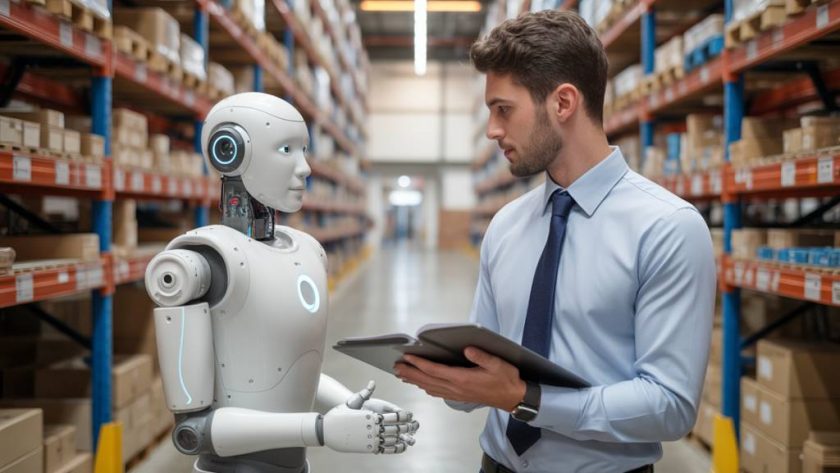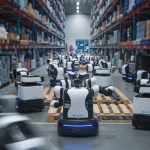The Rise of Humanoid Robots in the Logistics Industry
In recent years, the integration of humanoid robots into warehouse environments has gone from science fiction to operational reality. As e-commerce continues its rapid growth and customer expectations for speed and accuracy increase, companies are looking to emerging technologies—especially humanoid robots—to redefine their supply chain and logistics strategies.
Unlike traditional industrial robots, humanoid robots are designed to mimic human movements and interact in environments created for people. They combine mobility, dexterity, and advanced AI to perform tasks such as picking, packing, shelving, and even collaborating with human workers. This paradigm shift is not just a technological evolution—it’s poised to transform workforce dynamics and warehouse efficiency.
Benefits of Humanoid Robots in Warehouse Collaboration
The adoption of humanoid robots in warehouses brings a multitude of benefits. These advantages range from operational efficiency to improved ergonomics for human employees. Here’s how they are reshaping warehouse collaboration:
- Enhanced Flexibility: Unlike fixed automation systems or simple robotic arms, humanoid robots can work in dynamic environments, adapting in real time to changes in warehouse layouts or inventory systems.
- Improved Human-Robot Collaboration (HRC): Equipped with sensors, vision systems, and natural language processing, these robots communicate and collaborate safely with human co-workers, making shared workspaces more fluid and intuitive.
- Reduction of Repetitive Tasks: By taking over monotonous or physically strenuous tasks, humanoid robots reduce the risk of injury and fatigue among human employees.
- 24/7 Workflow: Humanoid robots can operate continuously without breaks, dramatically increasing throughput during peak seasons or high-demand periods.
- Rapid Workforce Scaling: In response to labor shortages or surges in demand, companies can quickly deploy robotic units to stabilize operations without the long onboarding and training periods associated with human hires.
Technology Behind Humanoid Robots in Logistics
The success of humanoid robots in warehouse operations depends on the synthesis of several cutting-edge technologies. Robotics companies developing these machines are investing heavily in artificial intelligence, machine learning, and mechanical engineering. Some of the core components include:
- Artificial Intelligence and Machine Learning: These robots use AI-driven algorithms to learn from their environment, optimize task execution, and improve performance over time.
- Computer Vision: Vision systems help humanoid robots identify objects, navigate dynamically, and avoid obstacles in busy warehouses.
- Natural Language Processing (NLP): Enables communication between robots and human workers via voice commands, improving collaboration and task coordination.
- Advanced Sensors: LiDAR, ultrasonic, and force sensors allow humanoid robots to detect proximity, speed, and pressure to safely handle products and interact with people.
Notable technology providers such as Agility Robotics, Boston Dynamics, and Sanctuary AI have developed humanoid robots capable of supporting logistics operations. The launch of robots like Digit and Phoenix, designed explicitly for warehouse use, showcases the commercial viability of this technology.
The Impact on Workforce Integration and Labor Economics
Workforce integration is a critical challenge—and opportunity—linked to the deployment of humanoid robots in logistics. Rather than replacing human workers outright, many experts argue that these machines are meant to augment human roles, opening the door to a more collaborative work environment.
The integration phase requires careful planning. Organizations must reskill employees, foster a culture of human-robot collaboration, and ensure safety protocols are rigorously followed. Human roles are shifting from manual labor to supervisory, maintenance, and robot-assistance positions, creating new types of employment opportunities.
However, the rise of warehouse automation does invoke concerns about job displacement. Analysts suggest that the future will favor a hybrid model where humans and robots work side by side. Companies investing in workforce development and training will be better positioned to manage this transition, maintaining a strong social license to operate in increasingly automated settings.
Use Cases and Real-World Applications
Several pioneering brands are already piloting or fully integrating humanoid robots in their logistics operations. Early adoption is not just a proof of concept—it provides valuable insight into the economic feasibility and scalability of these systems.
- Amazon: With its multi-robot warehouse systems, Amazon has signaled interest in technologies that include humanoid interfaces to improve flexibility in picking and packing operations.
- Walmart: The retail giant is exploring automation partnerships that include robotic arms and humanoids to handle back-of-house logistics in large distribution centers.
- Agility Robotics: Their robot Digit is currently being piloted in commercial settings to demonstrate how walking humanoids can move easily within human-centric warehouse spaces.
In each case, the goals are consistent: reduce human workload, increase fulfillment accuracy, and address labor shortages that have plagued the industry post-pandemic.
Challenges and Considerations in Deployment
Implementing humanoid robotics in warehouse environments does not come without challenges. Understanding these hurdles is essential for stakeholders weighing investment or operational shifts toward automation.
- High Upfront Costs: Humanoid robots are complex and expensive machines, with some models costing several hundred thousand dollars per unit.
- Integration Time: Unlike plug-and-play robotic systems, these units require configuration to work with existing warehouse management systems (WMS), shelving standards, and workflow scripts.
- Worker Acceptance: Human acceptance of robot co-workers can vary. Employee training and education are vital to minimizing resistance and maximizing collaboration.
- Regulatory and Ethical Issues: Companies must navigate workplace safety regulations, data privacy concerns, and ethical considerations related to automation and employment.
Looking Ahead: The Future of Human-Robot Collaboration in Warehouses
The future of warehouse logistics is undeniably intertwined with humanoid robotics. As AI continues to improve and costs decrease through scale and innovation, it’s likely that many distribution centers, big and small, will incorporate these technologies into their operations.
We anticipate a warehouse environment where robots and humans co-exist naturally, sharing both space and tasks. Visualize a scenario where a humanoid robot retrieves a heavy item while a human employee focuses on quality control or custom packaging—each performing roles suited to their strengths, driving mutual productivity.
From reducing operational costs to solving talent shortages, humanoid robots stand as a transformative force in warehouse logistics and workforce integration. Their ability to complement human tasks, operate autonomously, and navigate existing human infrastructures makes them one of the most exciting developments in the future of supply chain and logistics optimization.
The organizations that embrace this change early, invest thoughtfully, and prioritize human-robot collaboration are likely to gain competitive advantages as the sector evolves.




